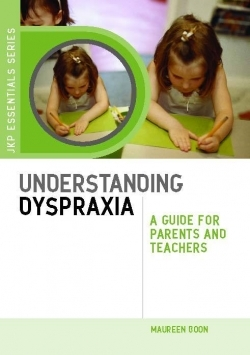Understanding Dyspraxia
A Guide for Parents and Teachers
In this updated and revised edition of the successful handbook, Helping Children with Dyspraxia, author and teacher Maureen Boon provides a valuable resource for parents and teachers looking to better understand and serve children with dyspraxia. A condition that affects six to eight percent of school-aged children, dyspraxia is a developmental delay that primarily affects motor function and speech. Often categorized as slow learners or disorganized and clumsy students, children with dyspraxia can face challenging years in the school system. Parents and teachers are often at a loss as to how to label and effectively teach bright and enthusiastic children who have seemingly inexplicable difficulties.
Aimed at readers both familiar and unfamiliar with dyspraxia, Boon introduces the typical dyspraxic child by guiding readers through the everyday obstacles and setbacks the child would face. From tying shoes to changing for gym class, the author’s clear, simple writing style helps readers gain a thorough understanding of the dyspraxic child’s frustrations. Readers become better prepared to empathize with the child and as a result, deal with the child’s frustrations in a productive, yet sensitive way. Parents are also offered clear, bulleted lists of pointers paired with case studies and testimonies by children and their parents. These testimonies bring a human element to the book, helping frame theoretical observations within real-life experiences.
Boon, the headteacher at Vranch House, a school for children with physical disabilities in Exeter, UK, espouses tips and practices used in weekly group therapy sessions that have yielded successful results with dyspraxic children. The most helpful section features a photo journal of a therapy session with step-by-step explanations of lessons and activities teachers can adopt in their own classrooms. Tips, such as stocking children’s pencil cases with adhesive putty to keep papers in place while writing, or adapting gym class to offer non-competitive “beat your own record” activities to encourage individual progress and success, provide teachers with practical methods of accommodation and training.
Because school systems and procedures vary greatly from country to country, readers in the US and Canada will find chapters outlining in-school assessments and grading procedures—all UK-focused—rather unhelpful. However, readers can glean overarching lessons—that is, to be proactive and aware—and use them when investigating their own school systems.
Understanding Dyspraxia is an invaluable guide for teachers and parents, offering in-depth analysis and advice on how to best meet the needs of these unique children.
Reviewed by
Shoilee Khan
Disclosure: This article is not an endorsement, but a review. The publisher of this book provided free copies of the book and paid a small fee to have their book reviewed by a professional reviewer. Foreword Reviews and Clarion Reviews make no guarantee that the publisher will receive a positive review. Foreword Magazine, Inc. is disclosing this in accordance with the Federal Trade Commission’s 16 CFR, Part 255.

